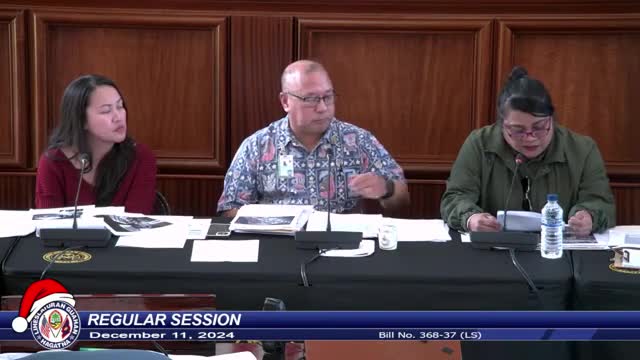Attorney General Moylan rejects release of nonviolent offenders amid Guam's drug crisis
January 01, 2025 | General Government Operations and Appropriations , Legislative, Guam
This article was created by AI summarizing key points discussed. AI makes mistakes, so for full details and context, please refer to the video of the full meeting. Please report any errors so we can fix them. Report an error »

In the dimly lit chambers of the Guam Legislature, a pressing discussion unfolded, revealing the challenges faced by the island's correctional system. As lawmakers gathered, the air was thick with concern over the deteriorating conditions within the facilities. "The generators don't work. The AC unit doesn't work, and there's a shortage of manpower," one director lamented, highlighting the urgent need for reform.
At the heart of the meeting was a contentious proposal regarding the release of nonviolent crime defendants. Attorney General Douglas Moylan firmly opposed the idea, advocating instead for a more robust solution: the construction of an 800-bed facility made from butler tents at the Dow Correctional Facility. This short-term goal reflects the dire state of the current system, which struggles to manage its population effectively.
The conversation took a somber turn as the discussion shifted to the impact of drug-related crimes on the community. The attorney general's refusal to release individuals charged with misdemeanors—such as petty theft, vandalism, and DUI—was rooted in the ongoing drug crisis gripping Guam. "Eight were killed this year due to meth," he noted, a stark reminder of the stakes involved. Last year, the toll was even higher, with 42 lives lost to the same epidemic.
As the meeting progressed, the urgency for solutions became palpable. The lack of response from the attorney general to previous inquiries only added to the frustration felt by lawmakers. The need for a comprehensive approach to address both the overcrowding in correctional facilities and the underlying drug issues was clear. With lives hanging in the balance, the discussions in the legislature underscored a critical moment for Guam—a call to action that could shape the future of its justice system.
At the heart of the meeting was a contentious proposal regarding the release of nonviolent crime defendants. Attorney General Douglas Moylan firmly opposed the idea, advocating instead for a more robust solution: the construction of an 800-bed facility made from butler tents at the Dow Correctional Facility. This short-term goal reflects the dire state of the current system, which struggles to manage its population effectively.
The conversation took a somber turn as the discussion shifted to the impact of drug-related crimes on the community. The attorney general's refusal to release individuals charged with misdemeanors—such as petty theft, vandalism, and DUI—was rooted in the ongoing drug crisis gripping Guam. "Eight were killed this year due to meth," he noted, a stark reminder of the stakes involved. Last year, the toll was even higher, with 42 lives lost to the same epidemic.
As the meeting progressed, the urgency for solutions became palpable. The lack of response from the attorney general to previous inquiries only added to the frustration felt by lawmakers. The need for a comprehensive approach to address both the overcrowding in correctional facilities and the underlying drug issues was clear. With lives hanging in the balance, the discussions in the legislature underscored a critical moment for Guam—a call to action that could shape the future of its justice system.
View full meeting
This article is based on a recent meeting—watch the full video and explore the complete transcript for deeper insights into the discussion.
View full meeting